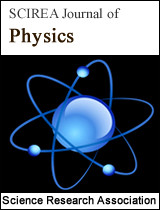A H atom model able to predict line series, fine structures, Fraunhofer and Fulcher spectra using a finite number of transversal electron orbits. The atom radius size effect on hyperfine structure lines.
DOI: 10.54647/physics140515 91 Downloads 12086 Views
Author(s)
Abstract
A novel H atom model is devised using electron orbits located in planes not passing through the proton and are transversal or perpendicular to an axis originating at the proton center, and hence they are orthogonal to the longitudinal planes used in Bohr H atom model. The physical foundations for the proposed model are described and a straightforward expression for calculating the electron allowed energy levels is presented. A few calculation examples are provided and the obtained emission spectral lines are compared to the H spectral lines series, to the Fraunhofer absorption lines, to lines inside Fulcher bands and to the NREL AM0 irradiance spectrum. The transversal orbit model is shown to predict the appearance of the fine and hyperfine electron emission structures. This is also the case if the atom radius, and consequently, the electron orbits are not considered rigid.
Keywords
Bohr model, emission line series, Rydberg energy, Fraunhofer spectrum, fine structure lines, Fulcher bands, NREL AM0 spectrum, the astronomical H lines, the non-rigid H atom.
Cite this paper
Emmanuel Saucedo-Flores, Víctor Manuel Rangel-Cobián,
A H atom model able to predict line series, fine structures, Fraunhofer and Fulcher spectra using a finite number of transversal electron orbits. The atom radius size effect on hyperfine structure lines.
, SCIREA Journal of Physics.
Volume 8, Issue 1, February 2023 | PP. 19-40.
10.54647/physics140515
References
| [ 1 ] | Niels Bohr, “On the constitution of atoms and molecules”, Philos. Mag. 26 (6), 1-25, (July 1913) DOI: 10.1080/14786441308634955 |
| [ 2 ] | Kenneth W. Ford, “Teaching the Bohr atom,” Letter to the Editor, Phys. Teach. 56, 196 (April 2018). https://doi.org/10.1119/1.5028224 |
| [ 3 ] | Kenneth W. Ford, “Niels Bohr’s First 1913 Paper: Still Relevant, Still Exciting, Still Puzzling” The Physics Teacher 56, 500 (October 2018); https://doi.org/10.1119/1.5064553 |
| [ 4 ] | The NIST Reference on Constants, Units, and Uncertainty, https://physics.nist.gov/cuu/Constants/ last accessed Dec/24/2022 |
| [ 5 ] | https://en.wikipedia.org/wiki/Fraunhofer_lines last accessed Dec/24/2022 |
| [ 6 ] | Adapted from https://en.wikipedia.org/wiki/Fraunhofer_lines#/media/File:Fraunhofer_lines.svg |
| [ 7 ] | Gordon S. Fulcher, “Spectra of low potential discharges in air and hydrogen”, The Astrophysical Journal 37: 60–71(1913) https://adsabs.harvard.edu/full/1913ApJ....37...60F |
| [ 8 ] | Zhou Qing, D. K. Otorbaev, G. J. H. Brussaard, M. C. M. van de Sanden, D. C. Schram, “Diagnostics of the magnetized low‐pressure hydrogen plasma jet: Molecular regime”, Journal of Applied Physics 80, 1312 (1996); https://doi.org/10.1063/1.362930 |
| [ 9 ] | D. C. Schram, R. A. B. Zijlmans, O. Gabriel, R. Engeln, “Dissociative recombination as primary dissociation channel in plasma chemistry” Journal of Physics: Conference Series 192 (2009) 012012 https://doi.org/10.1088/1742-6596/192/1/012012 |
| [ 10 ] | Jeong-Jeung Dang, Kyoung-Jae Chunga, and Y. S. Hwang, “A simple spectroscopic method to determine the degree of dissociation in hydrogen plasmas with wide-range spectrometer” Review of Scientific Instruments 87, 053503 (2016); https://doi.org/10.1063/1.4948919 |
| [ 11 ] | S. V. Avtaeva, and T. M. LapochkinaD. “Characteristics of Molecular Hydrogen and CH* Radicals in a Methane Plasma in a Magnetically Enhanced Capacitive RF Discharge”, Plasma Physics Reports, 2007, Vol. 33, No. 9, pp. 774–785. © Pleiades Publishing, Ltd., 2007 https://doi.org/10.1134/S1063780X07090073 |
| [ 12 ] | NREL Air Mass Zero: Extraterrestrial Solar Irradiance Spectra https://www.nrel.gov/grid/solar-resource/spectra.html data file author Daryl Myers on 1/23/2004, downloaded Sept 2019. |
| [ 13 ] | Fine structure https://en.wikipedia.org/wiki/Fine_structure last Dec/24/2022 |
| [ 14 ] | Randy Wayne, “Explanation of the fine structure of the spectral lines of hydrogen in terms of a velocity-dependent correction to Coulomb’s law”, The African Review of Physics (2015) 10:0043 https://www.semanticscholar.org/paper/EXPLANATION-OF-THE-FINE-STRUCTURE-OF-THE-SPECTRAL-A-Wayne/e84669921a878e5bc7459c8c855da498e8349a14#references |
| [ 15 ] | H.C. van de Hulst, "Radio waves from space", Nederlandsch Tijdschrift voor Natuurkunde 11,201 -221 (1945) https://doi.org/10.1007/978-94-009-7752-5_34 |
| [ 16 ] | H.I. Ewen and E.M. Purcell, "Radiation from galactic hydrogen at 1420 Mc/s", Nature 168,356 - 357 (1951). https://ugrad.phys.unsw.edu.au/physoc/radio/21cmhyd.pdf |
| [ 17 ] | C.A. Muller and J.H. Oort, "The interstellar hydrogen line at 1420 Mc/sec and an estimate of galactic rotation", Nature, Vol. 168, Issue 4270, pp. 357-358 (1951). https://doi.org/10.1038/168357a0 |

